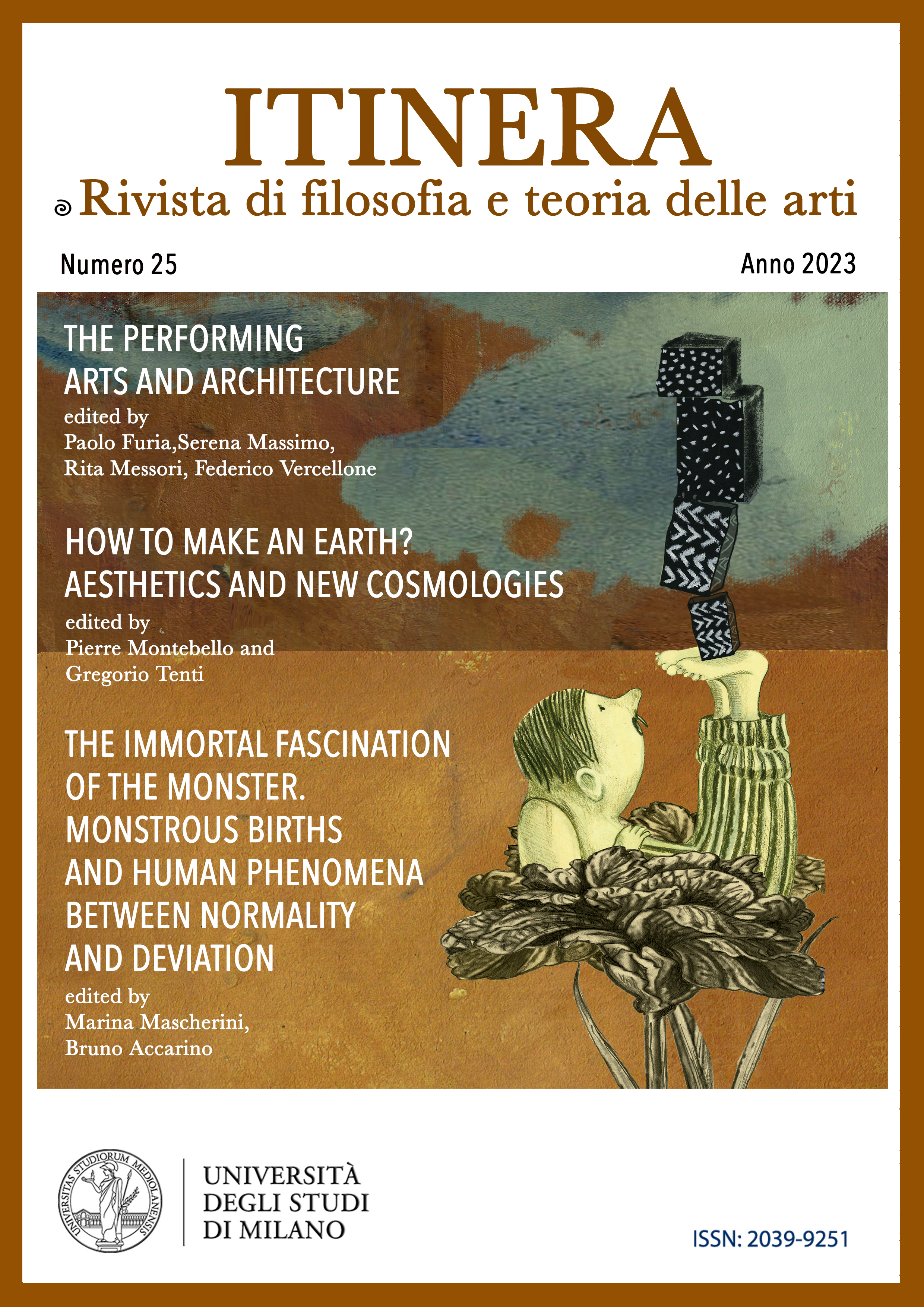Alice in Wonderland: «Art exists because reality is neither real nor significant»
DOI:
https://doi.org/10.54103/2039-9251/20813Parole chiave:
Alberto Burri, Poor Art, Philosophy of image, Informal Art.Abstract
What are the contaminations between art and architecture in today’s world? In the relationship with the architectural and urban space, what role does art play whenever art and architecture come into contact? Quoting James Ballard, the title of the present essay represents a sort of provocation, especially in case of association with Canaletto’s famed Capriccio palladiano and to the in some ways inappropriate usage that Aldo Rossi made of it. Starting from the observation that the composition made by Canaletto is, in a certain way, truer than Venice itself, one might wonder about the role of art in the construction of the architectural and urban image and, through some examples, affirm that in the present time art is a kind of seismograph that pushes architects to look beyond, to investigate the field of the unspoken or the unthinkable and it is used, in many cases, as a device to substantiate architecture itself and its outcomes.
How and through which instruments? The answer lies in the works as mere instruments used to go back to the (implicit or explicit) canons and codes used, or perhaps to get to admit that, conversely, they often fade into a hermeneutic of the indeterminate, in relation to which identifying limits and boundaries seems increasingly difficult.
Who makes what, between art and architecture? Ballard explains it masterfully and some artists show it clearly. The whole complex of these experiences is bound to the (solid) architecture and its theoretical corpus together with the desire to reflect on processes, procedures, transcriptions, and metamorphoses capable of feeding architecture and its languages.
Riferimenti bibliografici
A. Armando, La soglia dell’arte, Edizioni SEB27, Torino 2009.
C. Aubin, C. Mínguez Carrasco (ed. by), Bodybuilding. Architecture and Performance, Performa, New York 2020.
J.G. Ballard, Theatre of Cruelty (1998), interview by J.-P. Coillard, in “Disturb_magazine”, https://www.jgballard.ca/media/1998_disturb_magazine.html.
G. Bruno, Superfici. A proposito di estetica, materialità e media, Johan & Levi, Monza 2016.
A. Denes, Wheatfield, Porta Nuova, Milan, 2015, https://www.fondazionenicolatrussardi.com/en/mostre/wheatfield_/
C. Dumont d’Ayot, Un bâtiment, un dialogue. L’Ambassade de Suisse à Berlin, in “Faces”, 50, 2001-2002.
C. Haberman, L. Johnston, Urban Waves of Grain, in “New York Times”, August 2, 1982.
M. Kwon, One Place After Another: Site-specific Art and Locational Identity, The MIT Press, Cambridge, Massachusetts / London, England 2004.
S. Lavin, Kissing architecture, Princeton University Press, Princeton & Oxford 2011.
J. Lucan, M. Bruno, A Matter of Art: Contemporary Architecture in Switzerland, Birkhäuser, Basel 2001.
J. Rendell, Art and Architecture, I.B. Tauris, London/New York 2006.
A. Ruiz, Radical formalism, in “Women & Performance: a journal of feminist theory”, 26/2-3, 2016.
E.W. Soja, Postmodern Geographies: The Reassertion of Space in Critical Social Theory, Verso, New York 1989.
R. Spence, Do Ho Suh in Venice: the lives of others, in “Financial Times”, May 11, 2018.
J. Thorn-Prikker, Clad in Glass. The Novartis Building Façade within Helmut Federle’s Oeuvre, in Novartis Campus – Forum 3: Diener, Federle, Wiederin, Christoph Merian Verlag, Basel 2005.
A. Vidler, Warped Space: Art, Architecture, and Anxiety in Modern Culture, The MIT Press, Cambridge, MA 2000.
S. von Moos, Peter Fischli, David Weiss: Haus, Walther König, Köln 2020.
I.L. Wallace, N. Wendl, Contemporary Art About Architecture: A Strange Utility, Ashgate, Surrey 2013.
Dowloads
Pubblicato
Fascicolo
Sezione
Licenza
Copyright (c) 2023 Francesca Belloni

Questo lavoro è fornito con la licenza Creative Commons Attribuzione - Condividi allo stesso modo 4.0.
Gli autori che pubblicano su questa rivista accettano le seguenti condizioni:
1. Gli autori mantengono i diritti sulla loro opera e cedono alla rivista il diritto di prima pubblicazione dell'opera, contemporaneamente licenziata sotto una Licenza Creative Commons - Attribuzione - Condividi allo stesso modo 4.0 internazionale che permette ad altri di condividere l'opera indicando la paternità intellettuale e la prima pubblicazione su questa rivista.
2. Gli autori possono aderire ad altri accordi di licenza non esclusiva per la distribuzione della versione dell'opera pubblicata (es. depositarla in un archivio istituzionale o pubblicarla in una monografia), a patto di indicare che la prima pubblicazione è avvenuta su questa rivista.
3. Gli autori possono diffondere la loro opera online (es. in repository istituzionali o nel loro sito web) prima e durante il processo di submission, poiché può portare a scambi produttivi e aumentare le citazioni dell'opera pubblicata (Vedi The Effect of Open Access).





